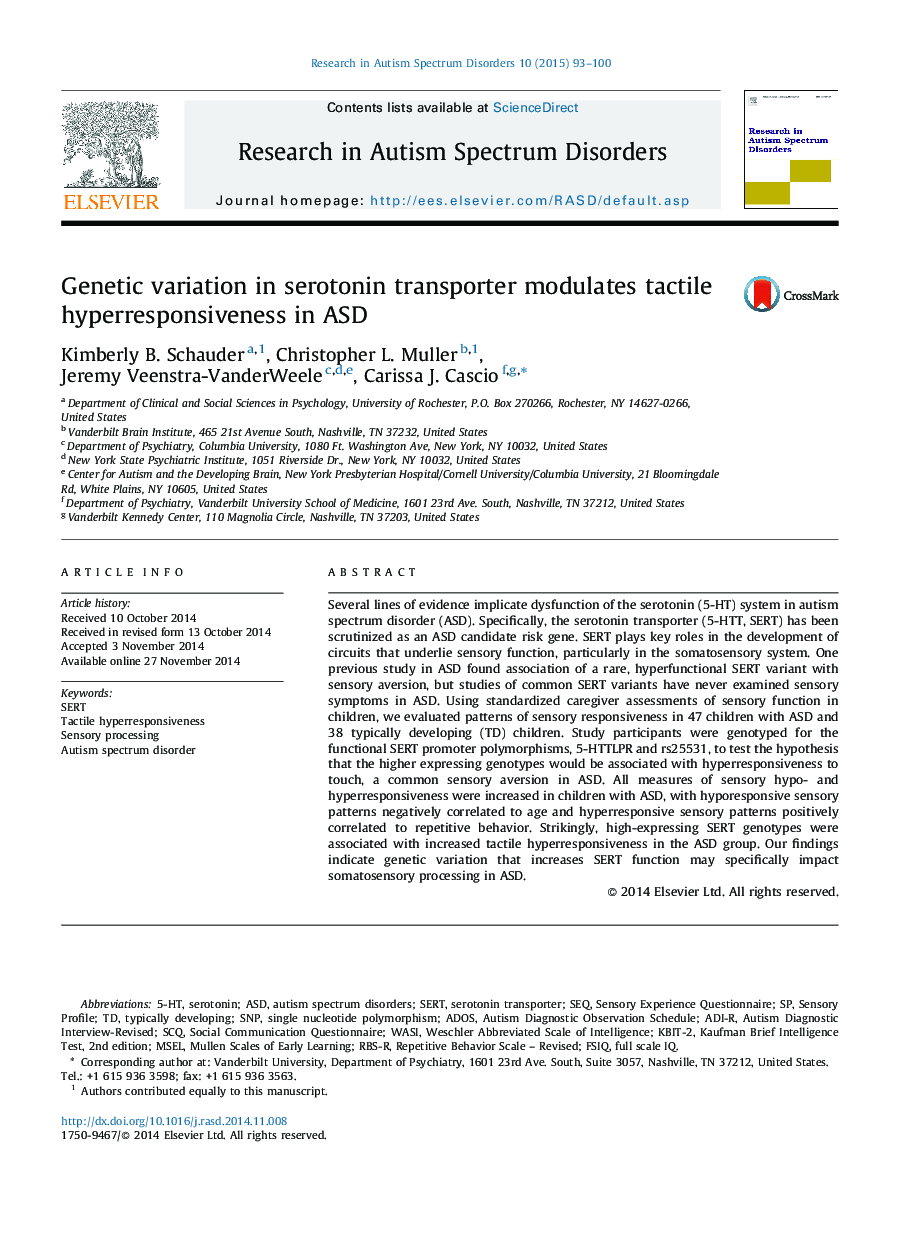| Article ID | Journal | Published Year | Pages | File Type |
|---|---|---|---|---|
| 370031 | Research in Autism Spectrum Disorders | 2015 | 8 Pages |
•Genotypic variation in SERT was associated with tactile hyperresponsiveness in ASD.•Age was negatively correlated with hyporesponsive sensory behaviors.•Repetitive behaviors were related to hyperresponsive sensory behaviors.
Several lines of evidence implicate dysfunction of the serotonin (5-HT) system in autism spectrum disorder (ASD). Specifically, the serotonin transporter (5-HTT, SERT) has been scrutinized as an ASD candidate risk gene. SERT plays key roles in the development of circuits that underlie sensory function, particularly in the somatosensory system. One previous study in ASD found association of a rare, hyperfunctional SERT variant with sensory aversion, but studies of common SERT variants have never examined sensory symptoms in ASD. Using standardized caregiver assessments of sensory function in children, we evaluated patterns of sensory responsiveness in 47 children with ASD and 38 typically developing (TD) children. Study participants were genotyped for the functional SERT promoter polymorphisms, 5-HTTLPR and rs25531, to test the hypothesis that the higher expressing genotypes would be associated with hyperresponsiveness to touch, a common sensory aversion in ASD. All measures of sensory hypo- and hyperresponsiveness were increased in children with ASD, with hyporesponsive sensory patterns negatively correlated to age and hyperresponsive sensory patterns positively correlated to repetitive behavior. Strikingly, high-expressing SERT genotypes were associated with increased tactile hyperresponsiveness in the ASD group. Our findings indicate genetic variation that increases SERT function may specifically impact somatosensory processing in ASD.
